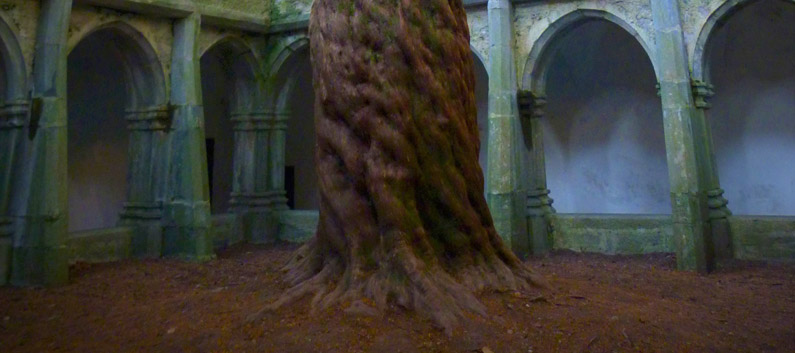
The cloister yew of Muckross Abbey, Co. Kerry
As autumn turns towards winter with the ancient festival of Samhain, the original Halloween when the veil between the worlds of living and dead is lifted, the baleful eye of the yew berry surveys the change of season from its sinister branches.

The red berry hides a lethal seed
Why sinister? Well, all of the yew is poisonous: its bark (though goats may just about manage it), its glossy leaves, and its berries, the seeds of which are lethal under a deceptively sweet bright coat . This, combined with its gnarled trunk and sombre form, and the locations it haunts over long years, has led to the yew being much associated with darkness, death and eternity.
“This (…) has led to the yew being much associated with darkness, death and eternity”
Along with Scots pine and juniper, yew is one of 3 native Irish conifers, the needle-leaved evergreens we more often associate with Christmas than Samhain, and is the longest-lived tree in Europe. Many have lived for a thousand years or more, and many more remain a mystery; yew trees usually become hollow with age, recycling their heartwood back into the soil, and thus their rings cannot be counted. Though slow-growing, the yew also has extraordinary powers of regeneration, the trunk regrowing even when the tree is almost entirely split under weight and age, and branches renewing as new shoots where they touch ground; such powers were revered by druidic religions. The timber itself is both strong and flexible, and a beautiful red colour; yew was regarded as a Noble of the Wood in ancient Ireland, for its artefacts such as longbows—though many in war also died from yew poison, a choice of exit for besieged Roman soldiers. Further east in Greece, the roots of the yew tree were said to grow into the mouths of the dead, thus removing their souls.

Reenadinna Wood, Killarney
“the roots of the yew tree were said to grow into the mouths of the dead, thus removing their souls”
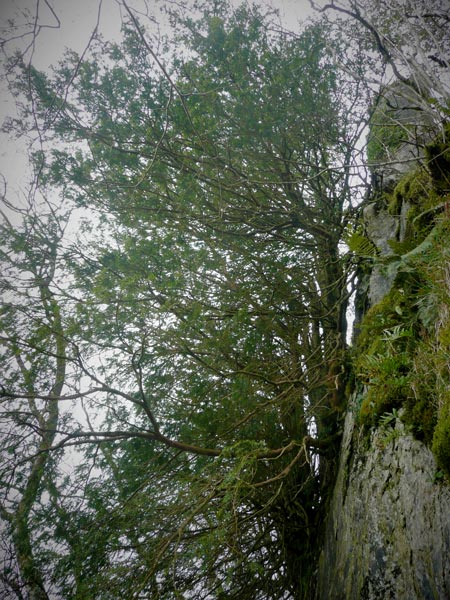
A Burren cliff
Entire forests of yew were once common in the Irish landscape, as attested to by the ghost of its presence in many placenames; for example Aughnanure (Áth na nIúr, the ford of the yew) in Co. Galway, Mayo (Maigh Iúr, the plain of the yew), and Terenure (Tír an Iúr, the land of the yew tree) in Co. Dublin. The name Ireland itself has even been proposed as deriving originally from “land of the yew”. However, its slow growth and toxicity meant that once yews were cut down or cleared for agriculture, they were rarely replanted or allowed regrow.
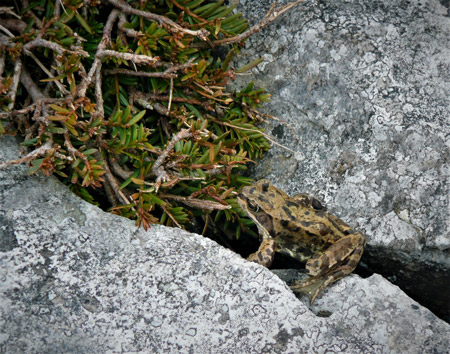
Frog and Yew
Pockets of yew still hang on in places—the most extensive and impressive being Reenadinna Wood at Killarney, where yews sprawl over limestone, and cast deep green shade over mossy boulders. Otherwise it mainly grows alone or in smaller groves, and can tolerate very harsh conditions, such as the cliffs and crags of the Burren. Indeed it is possible that if humans and all our works and livestock were to leave the Burren, yew woods would one day reclaim the landscape, coming down from the crags to overtake meadows and hazel woods alike, and plunge them into darkness.
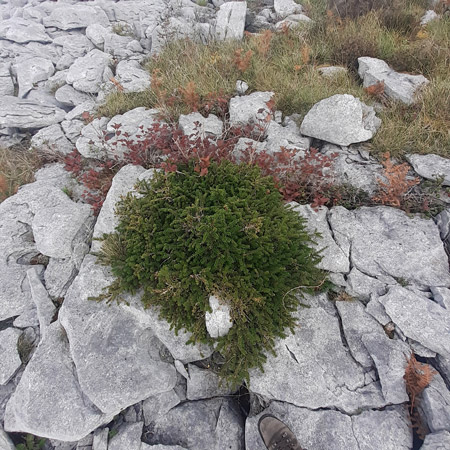
Dwarf Yew, growing in the Burren
“yew woods would one day reclaim the landscape, coming down from the crags to overtake meadows and hazel woods alike, and plunge them into darkness”
Yew is often found planted in churchyards, either to deter browsing livestock or as a symbol of eternity and the afterlife; indeed some truly ancient specimens predate not only the churchyards but Christianity itself, forgotten remnants of an old religion.
However the sombre columns amidst the rows of graves, which we now see in cemeteries worldwide, are all descended from a pair of yews on a lonely hillside in Florencecourt, Fermanagh, of mutated upright ‘fastigiate‘ form, and which still grow more than 200 years after their discovery. Other notable yews in Ireland include the great twin yews of Crom in Fermanagh, the cloister yew of Muckross Abbey in Kerry, and the Monks’ Walk at our sister gardens at Kilmacurragh, Co. Wicklow.

Yew at Glendalough
Who knows what ghosts walk in their shade, witnessing the change of centuries?
There are of course several examples of Irish yew next door to us here at the Gardens, in the quiet and select neighbourhood of Glasnevin Cemetery. Much older though, planted before the cemetery existed and in fact the oldest existing feature of the Gardens, are the large and straggling yews of Addisons Walk, the avenue planted by Thomas Tickell in the 1730s which led up to the old manor farmhouse. Who knows what ghosts walk in their shade, witnessing the change of centuries? The yews keep their secrets.
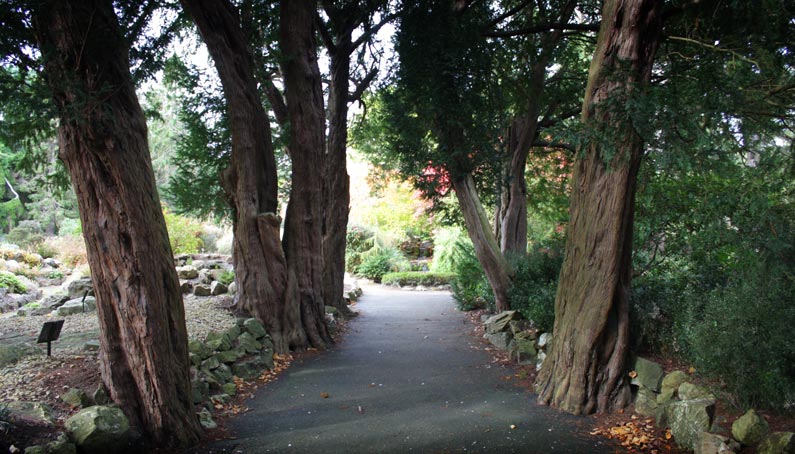
Addison’s Walk, at the National Botanic Gardens, Glasnevin
